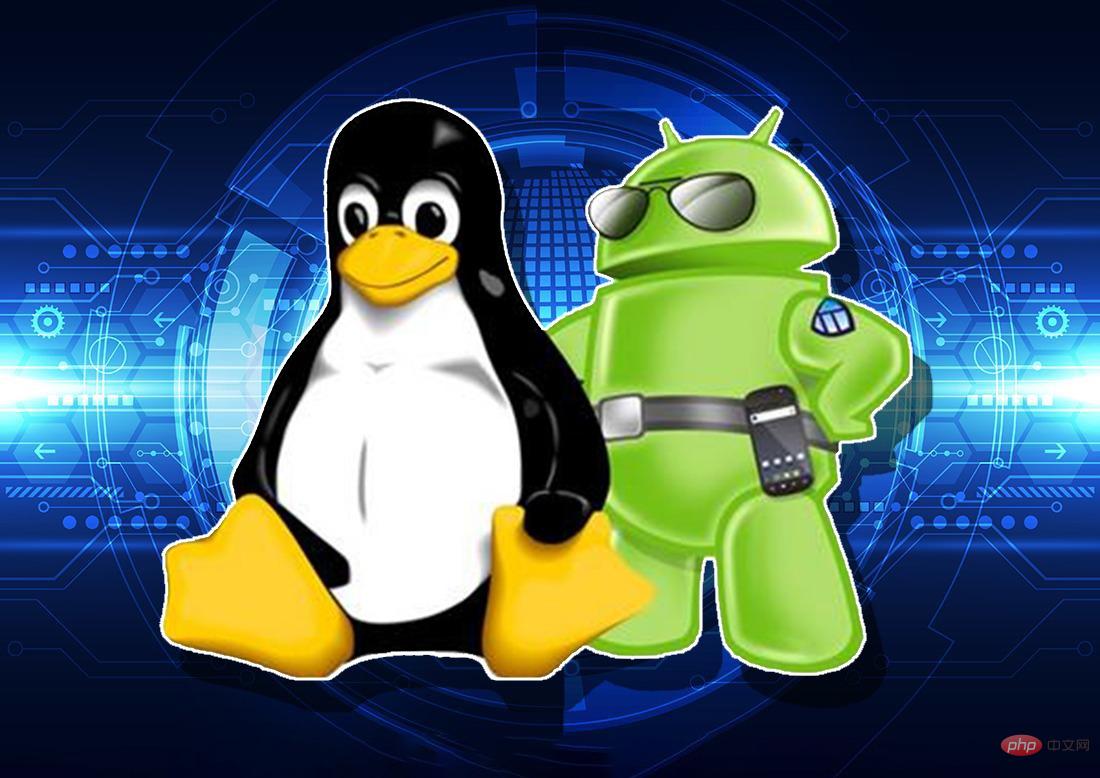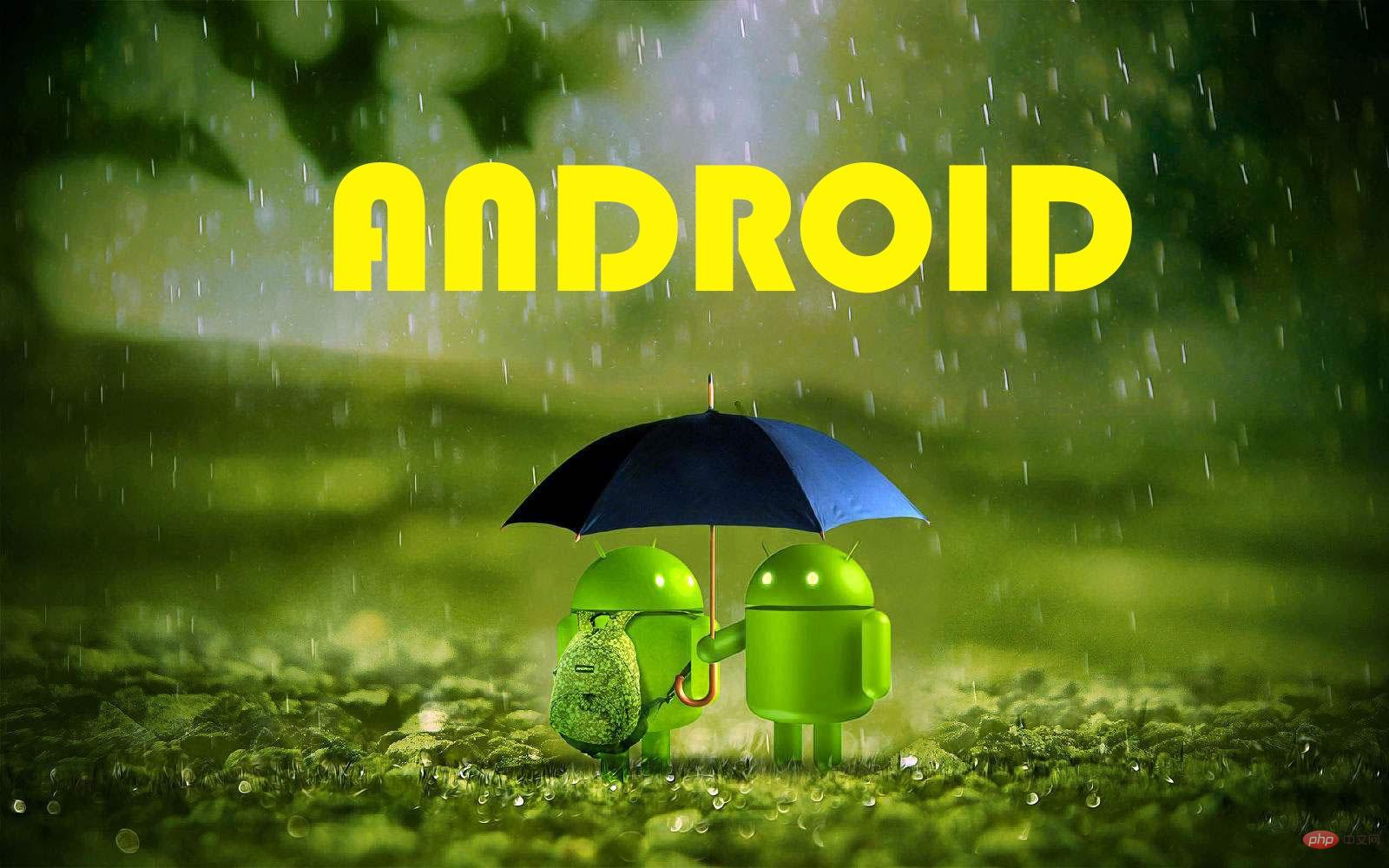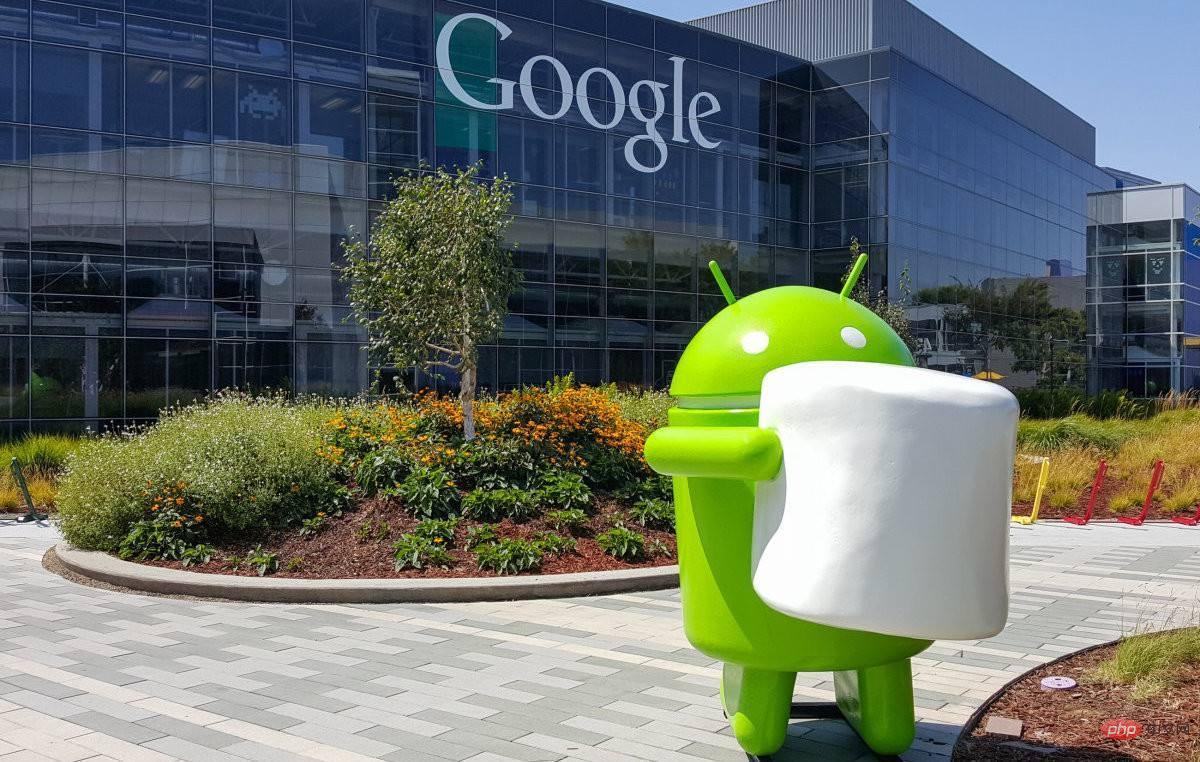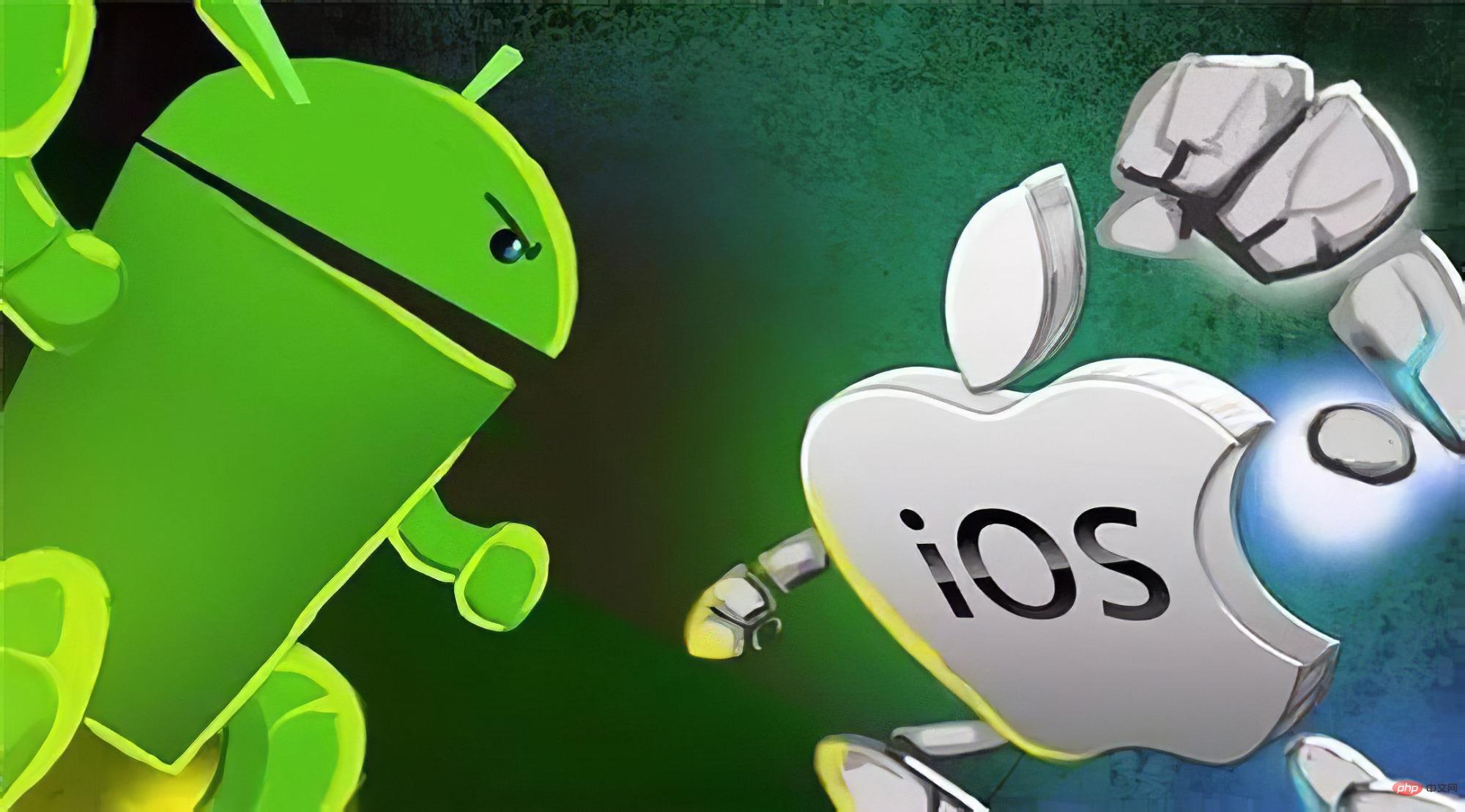Also based on linux, why is Android inefficient?
Reasons: 1. A JAVA virtual machine is set up on the Android system to support the running of Java applications, and this virtual machine consumes a lot of hardware; 2. The mobile phone manufacturer’s requirements for the Android system Customization and development increase the burden on the Android system, slowing down its running speed and affecting its fluency; 3. Application software is too bloated and homogeneous, which slows down the running speed of Android phones to a certain extent.

#The operating environment of this tutorial: linux7.3 system, Dell G3 computer.
Android is an open source mobile operating system that is widely used around the world and has the largest market share in the world. As we all know, the Android system is developed based on the Linux kernel. Compared with the clean, stable, smooth and other characteristics of Linux, the Android system still appears to be bloated and messy.

So, with the same kernel, why is Linux clean and stable while Android is bloated and smoky?
The upper-layer application system independently constructed by the Android system
Although the Android system is developed based on the Linux kernel, it only uses the Linux kernel and its upper-layer application system All are built completely independently. In this process, the Android system has redefined many things, especially in terms of its running environment.
Back then, when Google started developing the Android system, in order to lower the entry barrier for developers and quickly attract developers to join, it chose the popular JAVA language at the time. However, a JAVA virtual machine must be set up on the Android system to support the running of Java applications, and this virtual machine consumes a lot of hardware.

# Therefore, this design pattern of the Android system causes its fluency and portability to lag behind the Linux operating system.
Customization and development of Android systems by mobile phone manufacturers
Google’s Android system is open source, and any mobile phone manufacturer can build on it Secondary customization and development of the system, such as the current domestic mainstream OPPO mobile phone ColorOS, Xiaomi MIUI and Huawei's emui are all based on the Android system.
However, in the process of system customization and development, driven by profit, merchants often pre-install some specific application software into the system, and most of the pre-installed software cannot be freely uninstalled. of. Such a wave of operations will inevitably increase the burden on the Android system, slow down its running speed and affect its smoothness.

The Android system application ecosystem lacks supervision
One of the fundamental reasons why Apple’s iOS system is smooth is the lack of supervision of system applications and The management and supervision of permissions are in place, and a unified Apple Store is used in the APP installation mode. Users who want to download application software must go through this app store, and all businesses listed in the store have been strictly reviewed by the platform. This move fundamentally eliminates some permission confusion issues.
In contrast, the performance of Android system in this aspect is very confusing.

Due to the lack of unified management of the domestic Android ecosystem, mobile phone manufacturers of major brands are working independently, and due to the open source characteristics of the Android system, the process of installing applications is completely unnecessary. Through the app store, you only need an APk program installation package to install it directly. This gives applications the potential to unleash their will to a large extent, especially in terms of obtaining important permissions such as various message push, address book permissions, and text message reading. This not only slows down the running speed of the Android system, but also creates security risks of personal privacy leakage.
Application software is too bloated and homogeneous
Domestic application software is generally bloated. For example, Alipay covers almost every application scenario in life, and even You can also play games through Alipay. In reality most of these features are unnecessary. Domestic APPs wish that one software could take care of all your food, drinks and peeing.

In this case, if a large number of software are installed, there will inevitably be a large number of duplicate application functions in the mobile phone. This will also slow down the running speed of Android phones to a certain extent.
For more related knowledge, please visit the FAQ column!
The above is the detailed content of Also based on linux, why is Android inefficient?. For more information, please follow other related articles on the PHP Chinese website!

Hot AI Tools

Undresser.AI Undress
AI-powered app for creating realistic nude photos

AI Clothes Remover
Online AI tool for removing clothes from photos.

Undress AI Tool
Undress images for free

Clothoff.io
AI clothes remover

Video Face Swap
Swap faces in any video effortlessly with our completely free AI face swap tool!

Hot Article

Hot Tools

Notepad++7.3.1
Easy-to-use and free code editor

SublimeText3 Chinese version
Chinese version, very easy to use

Zend Studio 13.0.1
Powerful PHP integrated development environment

Dreamweaver CS6
Visual web development tools

SublimeText3 Mac version
God-level code editing software (SublimeText3)

Hot Topics
 1657
1657
 14
14
 1415
1415
 52
52
 1309
1309
 25
25
 1257
1257
 29
29
 1230
1230
 24
24
 Linux Architecture: Unveiling the 5 Basic Components
Apr 20, 2025 am 12:04 AM
Linux Architecture: Unveiling the 5 Basic Components
Apr 20, 2025 am 12:04 AM
The five basic components of the Linux system are: 1. Kernel, 2. System library, 3. System utilities, 4. Graphical user interface, 5. Applications. The kernel manages hardware resources, the system library provides precompiled functions, system utilities are used for system management, the GUI provides visual interaction, and applications use these components to implement functions.
 vscode terminal usage tutorial
Apr 15, 2025 pm 10:09 PM
vscode terminal usage tutorial
Apr 15, 2025 pm 10:09 PM
vscode built-in terminal is a development tool that allows running commands and scripts within the editor to simplify the development process. How to use vscode terminal: Open the terminal with the shortcut key (Ctrl/Cmd). Enter a command or run the script. Use hotkeys (such as Ctrl L to clear the terminal). Change the working directory (such as the cd command). Advanced features include debug mode, automatic code snippet completion, and interactive command history.
 How to check the warehouse address of git
Apr 17, 2025 pm 01:54 PM
How to check the warehouse address of git
Apr 17, 2025 pm 01:54 PM
To view the Git repository address, perform the following steps: 1. Open the command line and navigate to the repository directory; 2. Run the "git remote -v" command; 3. View the repository name in the output and its corresponding address.
 Where to write code in vscode
Apr 15, 2025 pm 09:54 PM
Where to write code in vscode
Apr 15, 2025 pm 09:54 PM
Writing code in Visual Studio Code (VSCode) is simple and easy to use. Just install VSCode, create a project, select a language, create a file, write code, save and run it. The advantages of VSCode include cross-platform, free and open source, powerful features, rich extensions, and lightweight and fast.
 vscode terminal command cannot be used
Apr 15, 2025 pm 10:03 PM
vscode terminal command cannot be used
Apr 15, 2025 pm 10:03 PM
Causes and solutions for the VS Code terminal commands not available: The necessary tools are not installed (Windows: WSL; macOS: Xcode command line tools) Path configuration is wrong (add executable files to PATH environment variables) Permission issues (run VS Code as administrator) Firewall or proxy restrictions (check settings, unrestrictions) Terminal settings are incorrect (enable use of external terminals) VS Code installation is corrupt (reinstall or update) Terminal configuration is incompatible (try different terminal types or commands) Specific environment variables are missing (set necessary environment variables)
 How to run java code in notepad
Apr 16, 2025 pm 07:39 PM
How to run java code in notepad
Apr 16, 2025 pm 07:39 PM
Although Notepad cannot run Java code directly, it can be achieved by using other tools: using the command line compiler (javac) to generate a bytecode file (filename.class). Use the Java interpreter (java) to interpret bytecode, execute the code, and output the result.
 How to run sublime after writing the code
Apr 16, 2025 am 08:51 AM
How to run sublime after writing the code
Apr 16, 2025 am 08:51 AM
There are six ways to run code in Sublime: through hotkeys, menus, build systems, command lines, set default build systems, and custom build commands, and run individual files/projects by right-clicking on projects/files. The build system availability depends on the installation of Sublime Text.
 vscode Previous Next Shortcut Key
Apr 15, 2025 pm 10:51 PM
vscode Previous Next Shortcut Key
Apr 15, 2025 pm 10:51 PM
VS Code One-step/Next step shortcut key usage: One-step (backward): Windows/Linux: Ctrl ←; macOS: Cmd ←Next step (forward): Windows/Linux: Ctrl →; macOS: Cmd →



